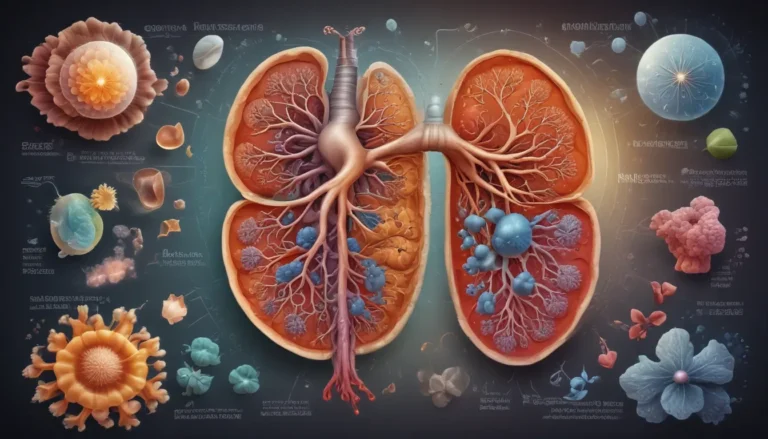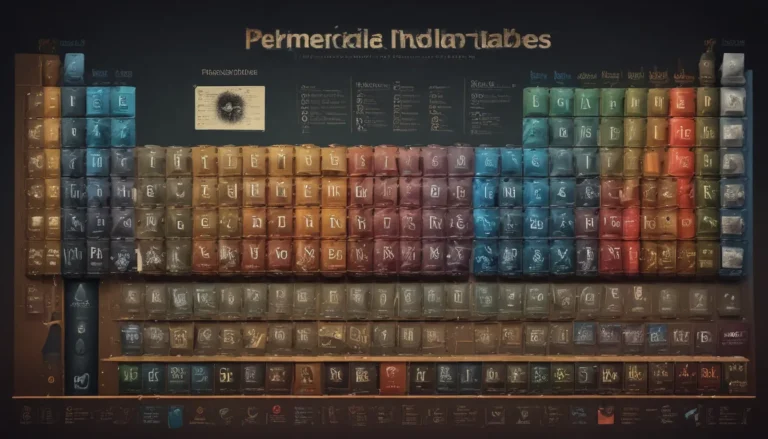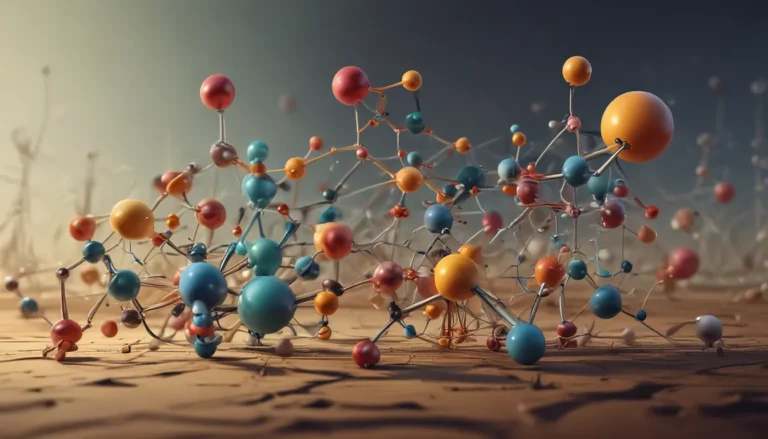A Note About Images: The images used in our articles are for illustration purposes only and may not exactly match the content. They are meant to engage readers, but the text should be relied upon for accurate information.
Are you curious about the intricate world of enzymes and their catalytic capabilities? One fundamental aspect that deserves attention is the active site, the epicenter where chemical reactions spring into action. Join us on a captivating journey as we delve into 16 intriguing facts about active sites, shedding light on their structure, specificity, regulation, and much more.
Unlocking the Active Site Mystery
- Active sites are like special locks that only fit specific keys, making chemical reactions happen efficiently.
- Understanding active sites helps scientists design drugs to target enzymes, opening doors to new medical treatments.
The Catalyst Behind the Magic
The active site acts as a catalyst within an enzyme, where the substrate binds and chemical reactions unfold. It serves as the pivotal point where reactants transform into products, orchestrating the fascinating dance of molecules.
Precision in Specificity
Each active site boasts a unique shape tailored to accommodate a specific substrate with utmost precision. This high degree of specificity ensures that only the right molecules can bind, setting the stage for efficient enzyme function.
Dynamic Transformations
Active sites are dynamic entities capable of undergoing conformational changes. These alterations can either enhance or inhibit enzyme activity, providing a meticulous control mechanism over the speed of chemical reactions within the cell.
Multitasking Marvels
Some enzymes showcase active sites that can bind multiple substrates simultaneously. This multitasking ability allows complex reactions to unfold in a synchronized fashion, boosting the overall efficiency of the process.
Influence of Environment
Temperature and pH fluctuations can influence the activity of active sites. Changes in these environmental conditions can impact both the shape and function of the active site, consequently modulating enzyme activity.
Beyond the Basics: Allosteric Regulation
Certain enzymes harbor allosteric active sites, where molecules binding at sites other than the active site itself can regulate enzyme activity. This additional layer of control offers a nuanced approach to enzyme modulation.
Insights from Analog Binding
Active sites possess the remarkable ability to bind transition state analogs with high affinity. These molecules mimic the transitional state of a reaction, providing valuable insights into the mechanisms underlying enzyme function.
Guiding Enzyme-Substrate Affinity
The active site plays a pivotal role in dictating the specificity of an enzyme towards its substrate. The intricate arrangement of amino acids within the active site enables selective binding and catalytic prowess.
Nooks and Crannies of Activity
Enzyme active sites often reside within clefts or pockets on the enzyme surface. This spatial arrangement creates a confined environment for the substrate, fostering efficient catalysis within the enzyme’s realm.
Battling Inhibition
Active sites are susceptible to inhibition by molecules known as inhibitors. These compounds can block the active site, preventing substrate binding and halting the enzyme’s catalytic activity in its tracks.
Cofactors as Companions
Certain active sites necessitate the presence of cofactors, such as metal ions or coenzymes, for optimal activity. These cofactors bind to the active site, actively participating in the catalytic journey.
Embracing the Induced Fit
The concept of induced fit posits that the active site undergoes conformational alterations upon substrate binding. This adaptive process enhances the compatibility between the enzyme and substrate, facilitating catalysis.
Embracing Acid-Base Catalysis
Active sites may house amino acid residues that can act as acids or bases, facilitating acid-base catalysis. These pivotal residues donate or accept protons, bolstering the enzymatic reaction pathway.
Delving into Covalent Collaboration
Active sites can engage in covalent catalysis, forming transient bonds between the enzyme and substrate. Amino acid residues within the active site contribute to this covalent dance, driving the catalytic process forward.
Shaping Enzyme Identity
The active site fundamentally contributes to the overall specificity of an enzyme. The unique amino acid composition within the active site dictates which substrates can bind and partake in catalytic transformations.
Targeting the Drug Design Domain
Comprehending the intricate structure and function of active sites empowers researchers to design drugs that selectively target and inhibit specific enzymes. This precision-driven approach has paved the way for the development of diverse therapeutic agents.
Embracing the Marvels of Active Sites
In the intricate realm of chemistry, the active site reigns supreme as a catalyst for numerous chemical reactions. It acts as a hub where substrates converge, setting off a chain of transformations that culminate in product formation. Through a closer exploration of the 16 intriguing facts surrounding the active site, we have unveiled its profound significance in catalysis and its promising applications across various scientific disciplines. As research in this domain continues to evolve, fresh discoveries are bound to expand our understanding and open up new avenues for exploration.
FAQs
-
What is an active site in chemistry?
An active site is a specific region on an enzyme or catalyst where the substrate molecule binds, initiating a chemical reaction. -
How does the active site determine substrate specificity?
The shape, charge distribution, and chemical properties of the active site dictate its ability to interact with specific substrate molecules. -
Can the active site accommodate multiple substrates?
While some enzymes can interact with multiple substrates, others exhibit high specificity and bind only to a single substrate. -
How do inhibitors affect the active site?
Inhibitors can bind to the active site, preventing substrate binding and impeding the enzyme’s catalytic activity. -
Can the active site be modified?
The active site can undergo modifications through genetic mutations or chemical alterations, influencing the enzyme’s activity and substrate binding characteristics. -
What role does the active site play in drug development?
Active sites serve as prime targets for designing drugs that can modulate enzyme activity, offering potential therapeutic benefits for various medical conditions. -
Can the active site undergo conformational changes?
Yes, the active site is capable of undergoing conformational adjustments, adapting to accommodate different substrates with varying shapes. -
How can the active site be visualized?
Techniques like X-ray crystallography and cryo-electron microscopy are utilized to visualize the structure of the active site and its interactions with substrates.
Continuous Commitment to Quality
At the core of our mission lies a dedication to delivering accurate and captivating content. Each fact showcased on our platform is contributed by real users, enriching our repository with diverse insights and information. Our team of editors meticulously review each submission, ensuring that the facts shared are not only engrossing but also verifiable. Trust in our commitment to excellence as we embark on a journey of exploration and learning together.






